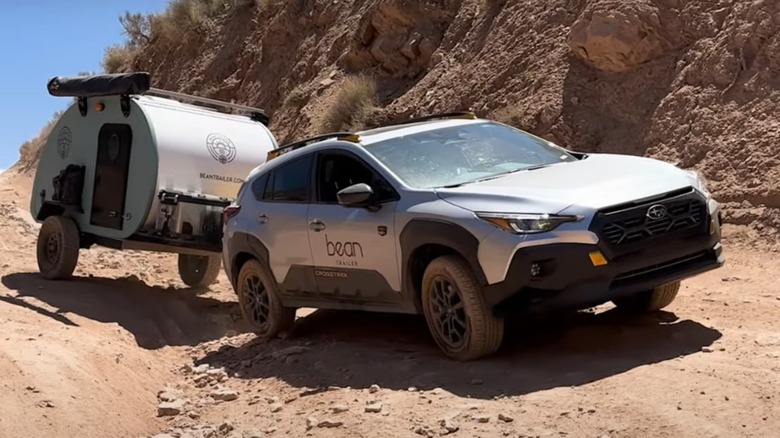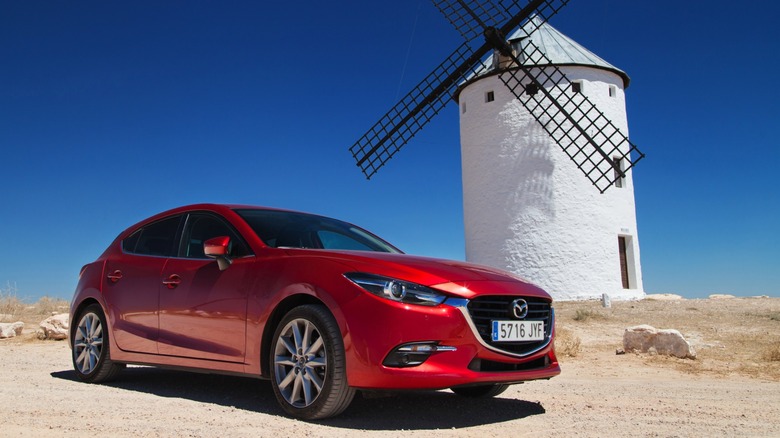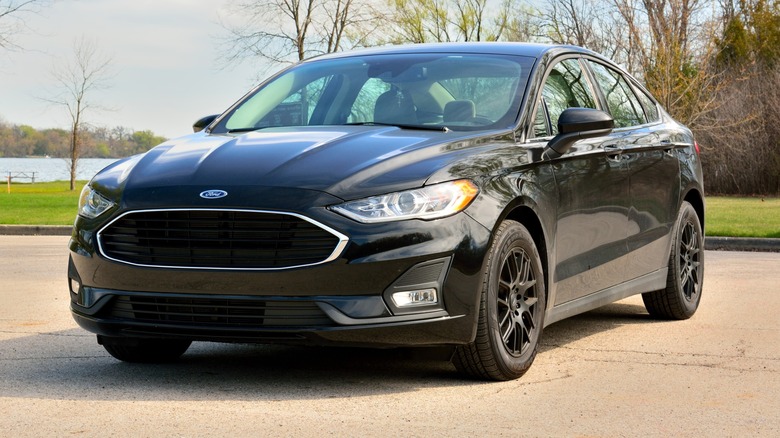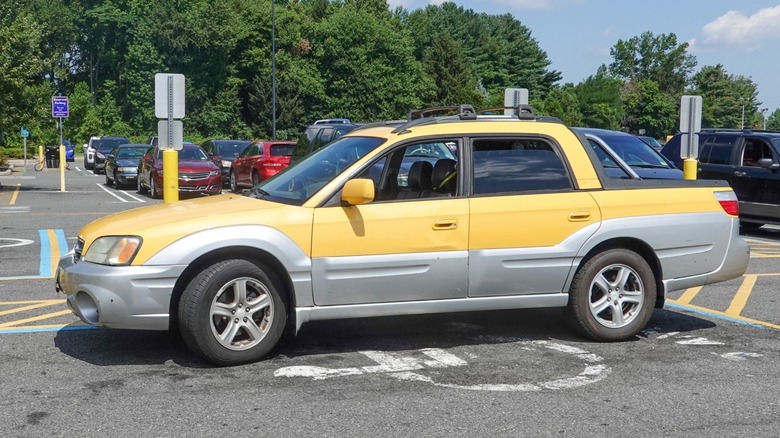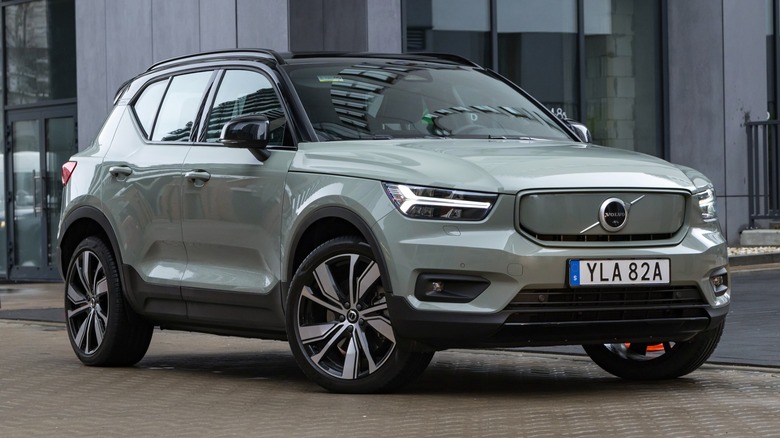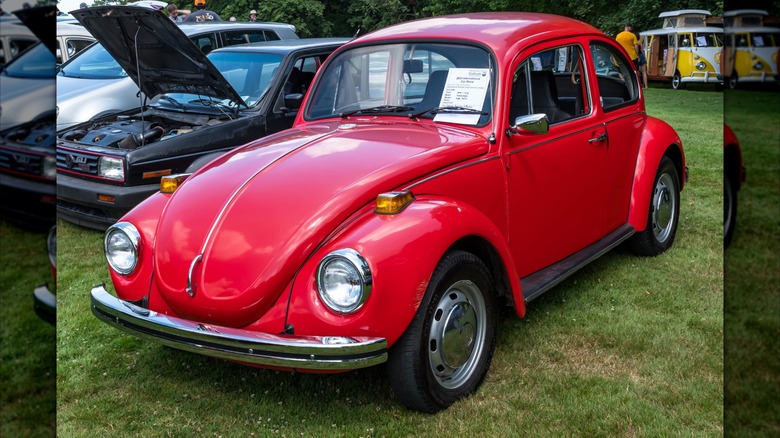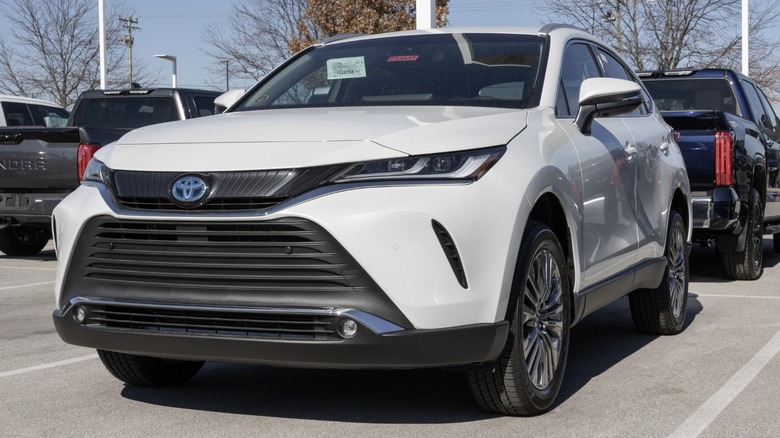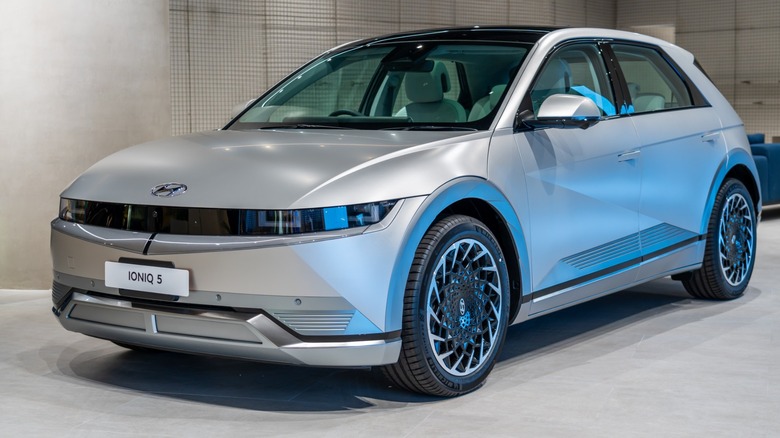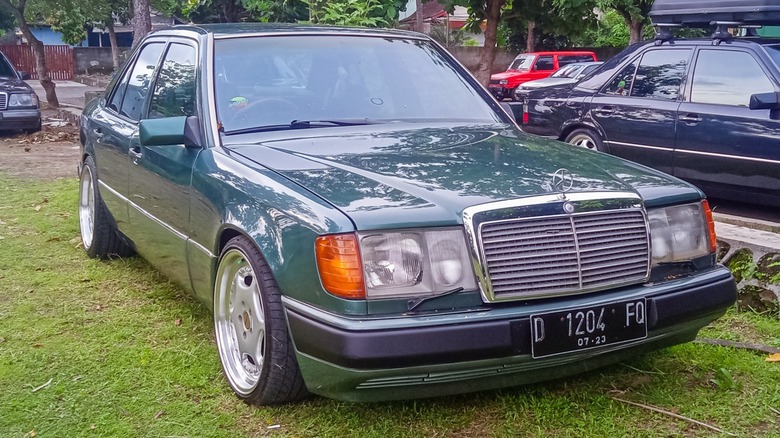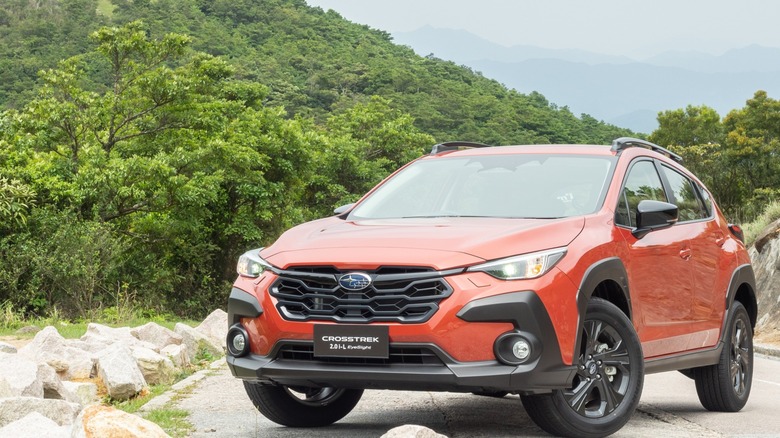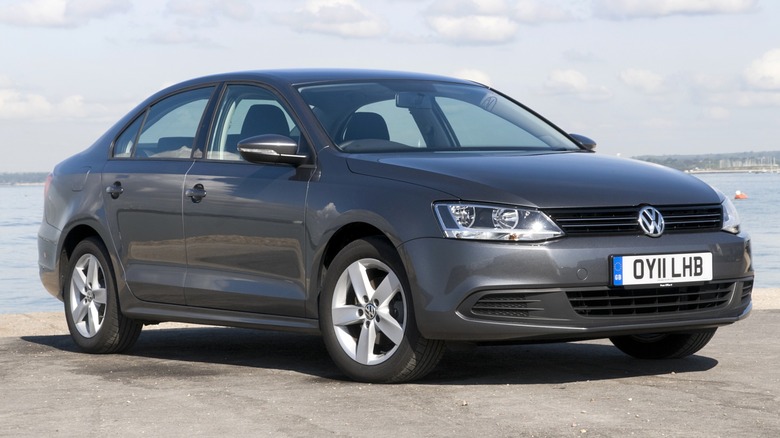10 Small Vehicles With Great Towing Capacities
In today's world, we have myriad options of equipment we can tow with our vehicles. There is something for everyone, from boats to take to the lake to ATVs and dirt bikes while many of us pull trailers full of gear for working, a necessity for many entrepreneurs with businesses in the trades. The conventional wisdom in America is that you need a truck to pull anything. Whether you have a couple of jet skis or an open trailer full of lawnmowers, few people consider using anything else. However, that view lacks creativity and pragmatic thought. Trucks are not the only vehicles capable of towing.
If you are an amateur racer with your own sprint car, tools, and tires to take to the track every weekend, a truck is most likely necessary. But if you only occasionally take your jet ski or Hobie Cat to the lake, there is a good chance your daily driver will pull it just fine. A look at European highways suggests that large pickups are mostly unnecessary as you will find a range of vehicles like BMW or Volvo sedans pulling campers, aka caravans, with ease. Granting that a discussion can be had about various speed laws, local customs, and road conditions that contribute to differing practices overseas, many small vehicles are available that can pull plenty of weight. Nonetheless, while SlashGear strenuously recommends following your manufacturer's guidelines, here are the best examples of both new and used small vehicles that can pull their weight.
Mazda3
The first successful small-car Mazda exported to the United States helped establish the brand in the country. The GLC, aka Great Little Car, proved Mazda's capabilities and led to a long-term presence in the country. Nearly 50 years on the Mazda3, introduced in 2004, takes its place and has been a successful model from the start.
Although the Mazda3 has undergone several changes, its basic formula has stayed the same. Mazda's adept mixing of attractive styling with good build quality and an engaging driving experience makes the Mazda3 a favorite among buyers and automotive press alike. The most recent SlashGear review in 2023 gave Mazda3 a 9/10 rating, noting the driving experience and interior quality as highlights. Creating that engaging driving experience is core to how Mazda builds cars.
Though on the small side, the Mazda3 Web Owner's Manual lists a towing capacity of 1,322 pounds, or 2,094 with trailer brakes. This increases to an impressive 3,306 pounds with the Skyactiv-D diesel engine, which is unfortunately not available in North America. Curiously, the Mazda USA manual makes no mention of towing at all. Therefore, it appears you could take your kids and a light pop-up camper for the weekend. Just use your best judgment and consult a professional for specific advice for your model before hooking it up.
Ford Fusion
Bumping the Ford Taurus in position from a mid-size to a full-size, the Ford Fusion debuted in 2005 for the American market. Its manufacturing for the market takes place in Mexico, but the Fusion model is older than this and manufactured elsewhere. It is adapted from the European Mondeo model, introduced in 1993 as a "world car" designed to be sold across all markets. It just took a while for it to cross the Atlantic. It also left for good in 2020 as Ford's final family car.
Even though it was created to sell across markets, the Fusion's debut model differs from its Euro cousin in many ways. The cars share a platform but display cosmetic differences and offer different engine options. Regardless, neither version delivers much in the way of excitement. The Fusion is a mainline sedan meant to provide reasonably comfortable transportation for an affordable price, and it has done that reasonably well for many years. It can also pull a load behind it.
The Fusion was offered in front-wheel-drive or all-wheel-drive, and either one is suitable for towing. Payload capacity for cars with the 2.5-liter and 1.5-liter turbocharged engine limits total weight to just 1,000 pounds. However, those who opt for the turbocharged 2.0-liter can double that. While it will not have you pulling a backhoe to your worksite, you can certainly take your rare Husqvarna and Greeves dirt bikes to the trail.
Subaru Baja
Always quirky Subaru produced the tiny but fun BRAT pickup in the '80s and revived the car-based truck concept in 2003 with its Baja model. Built on a Legacy Outback platform, the Baja is nearly identical, with the exception of having its cargo area exposed to the elements and a window behind the second row of seats. Otherwise, the 2.5-liter 4-cylinder boxer sits up front sending power out to all four corners, just like every Subaru.
While Subaru's all-wheel-drive setup is one of the brand's selling points, the Baja's selling point seems to be the ability to haul cargo. However, your payload size will be highly limited. It might work to get supplies to remodel the cabinet in your bathroom but ill equipped to get supplies to remodel the bathroom itself.
Perhaps the saving grace of the Baja for some is that it has a decent towing capacity. Subaru only offered the 2.5-liter engine, so the 2,400 pounds of towing capacity applies to all models of Baja. This puts you well within spec for pulling small campers like a 13' Scamp and even the 16' model if you forego a few options.
Volvo XC40
Since 1927, automobiles have been rolling out of Swedish factories under the Volvo marque, establishing the country as a builder of quality vehicles with a penchant for safety. Although the company no longer builds models like the notoriously reliable and robust Volvo 240, its reputation still holds true and its modern offerings blend Scandinavian practicality with modern style.
All models currently offered by Volvo come with at least a partially electrified drivetrain, including mild hybrids, plug-in hybrids, and full EV. The smallest of them is currently the Volvo XC40, which SlashGear reviewed in 2023, noting its generous power output and standard equipment as highlights. Indeed, drivers enjoy up to 247 horsepower from its turbocharged 2.0-liter 4-cylinder engine and 48-volt hybrid system. Not only is this plenty for traversing up the mountains to hit the slopes in Aspen, it allows drivers to bring their own accommodations to save on the cost of the area's notoriously expensive real estate.
The XC40 won't allow anyone to haul a camper with triple slide-outs, but its 3,500-pound towing capacity does offer the opportunity to bring a fully optioned camper of reasonable size. A 20-foot camper loaded with supplies is probably out of the question, but the Volvo should handle up to 18-foot campers with aplomb.
Volkswagen Type 1 Beetle
One of the most famous cars ever made also enjoyed among the longest production runs while having one of the widest sales distributions of any model. At one point or another, you could find a Volkswagen Type 1 Beetle anywhere on the planet, including Antarctica. They've been used for everything from taxis in Mexico to surprisingly capable off-road racers and everything in-between. Built to be both simple and basic, although Beetles do offer some cool and unique features, they are also versatile and more capable than most might give them credit for.
The Beetle's versatility extends to towing. Whether you would want to actually try this yourself is another discussion, but you can. You might not want to buy a Super Bugger RV conversion Beetle, but the El Chico gooseneck-style camper trailer mounts to a hitch attached to the roof of the car. Furthermore, the towing possibilities do not end with vintage purpose built campers.
With production ending decades ago, no official tow ratings are available now, if they ever were. However, using anecdotal information from users on the internet, you could guess that one of the later model Beetles with the dual-port 1600cc engines can handle around 1,000 pounds of towed payload.
Toyota Venza
While the Toyota Camry has been the best-selling car in America for decades and the Corolla the best-selling car worldwide, neither is well-suited for towing. Although the Camry is rated in Australia for towing with trailer brakes up to 3,500 pounds, towing is frowned upon by the powers that be at Toyota of America. Therefore, you could throw caution to the wind and hook up a trailer to your Camry anyway, or you could pick up the slightly larger Toyota Venza.
Introduced in 2008, the Venza does sit in a slightly awkward position within the Toyota lineup. While it can be considered a crossover, it actually rode on a Camry platform when introduced, making it more of a Camry stretched upward and given extra cargo space. The good news is that with that Camry platform, buyers could expect Camry driving characteristics and Camry reliability, and both of those aspects are positive. A couple of design updates later and the Venza now rides on the RAV4 platform like a true crossover or SUV. Furthermore, late model Venzas come with more power than their car-like predecessors thanks to a hybrid powertrain.
Towing with the RAV4-based models should be a breeze. Along with the 55.1 cubic feet of cargo space inside, the Venza can handle up to 3,500 pounds of towing payload, making the possibility of pulling a bow rider boat on the smaller side for some lake day fun.
Hyundai Ioniq 5
With copious amounts of media coverage and much to do about the towing capabilities of the all-electric Cybertruck, you may have forgotten about the possibilities of towing by other vehicles driven solely by flowing electrons. Headlines aside, you need no overpriced hunk of steel for towing. In fact, a much more affordable Hyundai Ioniq 5 can do the job quite well, provided the trailer is of a modest size.
Hyundai first used the Ioniq name in 2016 for a generally dull car. Fast forward to the 2022 model year and Ioniq, now with a 5 suffix, made a full transition to EV and introduced a unique retro-but-futuristic design. The new car not only exhibited stunning styling both inside and out, its EV specifications also impressed thanks to an available range of nearly 400 miles and up to 320 horsepower, unless buyers opt for the high-performance Ioniq 5 N, boosting output to an incredible 621 horsepower. Considering the Car and Driver rating of 10/10, it might be hard to argue against buying this car.
With the ample torque provided by electric motors, towing should be a breeze. Hyundai USA sets the capacity at 1,650 pounds without trailer brakes and 2,000 pounds with. Pre-wiring for the trailer is also said to be included. Curiously, towing capacity in the E.U. for what is presumably the same car is 1,600 kilograms, or 3,527 pounds. Use your best judgment about the best guideline that applies to you.
Mercedes-Benz W124
Produced from 1984 to 1997, the W124 model from Mercedes-Benz is said by many to be the pinnacle of German luxury engineering and praised for being built exceptionally solid while offering a high level of luxury with an enjoyable driving experience. The W124 chassis designation covers several models including the gasoline-powered 300E sedan, diesel 300TD wagon, and others.
Gasoline cars received a straight-6 3.0-liter M103 engine that has proven to be among the most durable engines ever built, provided it receives regular maintenance. Neglect it at your peril. Furthermore, the longevity of the diesel is legendary — they continue to serve as taxis in Albania, where German media giant Deutsche Welle interviewed a driver in 2022 who had registered 1 million miles on one with the original engine.
Nearly 30 years out of production, Mercedes-Benz no longer publishes official specifications. However, anecdotal information on the internet, along with semi-official ratings from Autotrader Australia, suggests most W124 models can handle about 1,500 pounds unbraked and 3,000 pounds braked payloads. These cars are built solid and should have no issues with towing. However, it seems most survivors available today will probably be in pristine condition and very expensive, or affordable but on the precipice of sucking its owner into a money pit. So beware, as a wise man once said, there are few things in this life as expensive as a cheap luxury car.
Subaru Crosstrek
Full-time all-wheel-drive is a hallmark of Subaru vehicles and can be found on nearly every vehicle it has made over the last half-century. Knowing it had a versatile and capable product but fewer resources than its competitors, Subaru sought buyers from niche communities early on, establishing the brand as the choice for outdoor adventure seekers. Today, Subaru offers a focused lineup of vehicles that cater to their core customer group and offer features they want.
Fulfilling duties as the affordable base model of the lineup is the Subaru Crosstrek. It has been with the automaker since 2012 and generally offers a blend of comfort and capability with good reliability and robust capabilities. While its newest cars are less quirky than their forebears from the '70s and '80s, the boxer engines and AWD will always set them apart.
Cars made for outdoor adventures are often going to be put to test their mettle away from civilization, even if most of the cars will never leave town. Regardless, excursions to the frontier may necessitate bringing your own shelter, and the Crosstrek is officially up to the task. With either the 2.0- or 2.5-liter engine, you may pull up to 1,500 pounds with your car. However, for those who opt for the Subaru Crosstrek Wilderness model with multiple off-road modifications, the tow rating increases to 3,500 pounds. This will put you within range of pulling a range of lightweight travel trailers to the hills for a weekend under the stars.
Volkswagen Jetta TDI
With Volkswagen's recent push towards the electrification of its entire lineup, it appears the brand has abandoned the fuel-sipping diesel engines it championed for decades. Then again, Volkswagen's Dieselgate emissions cheating scandal probably did not help diesel sales over the ensuing years. Nonetheless, VW built millions of diesel-powered cars over decades of production.
VW introduced a diesel in the 1976 Golf and expanded from there, going as far as to build a monster V12 TDI diesel for the Audi Q7. But one of its mainstays offered year in and year out was the Jetta TDI. While the Jetta debuted in 1979, the TDI version came in 1992. That year, it was only good for 75 horsepower and 103 lb-ft of torque, but by 2010, the 2.0-liter TDI offered 140 horsepower and 236 lb-ft of torque while delivering up to 41 mpg. While it was still no powerhouse, the power was enough to move the car with some to spare.
For American drivers, a VW dealer towing guide states towing is not recommended for the Jetta sedan while it rates the Jetta SportWagen with the gasoline 1.8 TSI engine up to 2,000 pounds. But since TDI warranties are long-expired, perhaps you could use Australian figures. CarsGuide says your 2015 2.0-liter TDI Jetta should handle about 3,000 pounds. If you play it safe you should have no problem getting a couple of dirt bikes, jet skis, or quads out for some fun.
